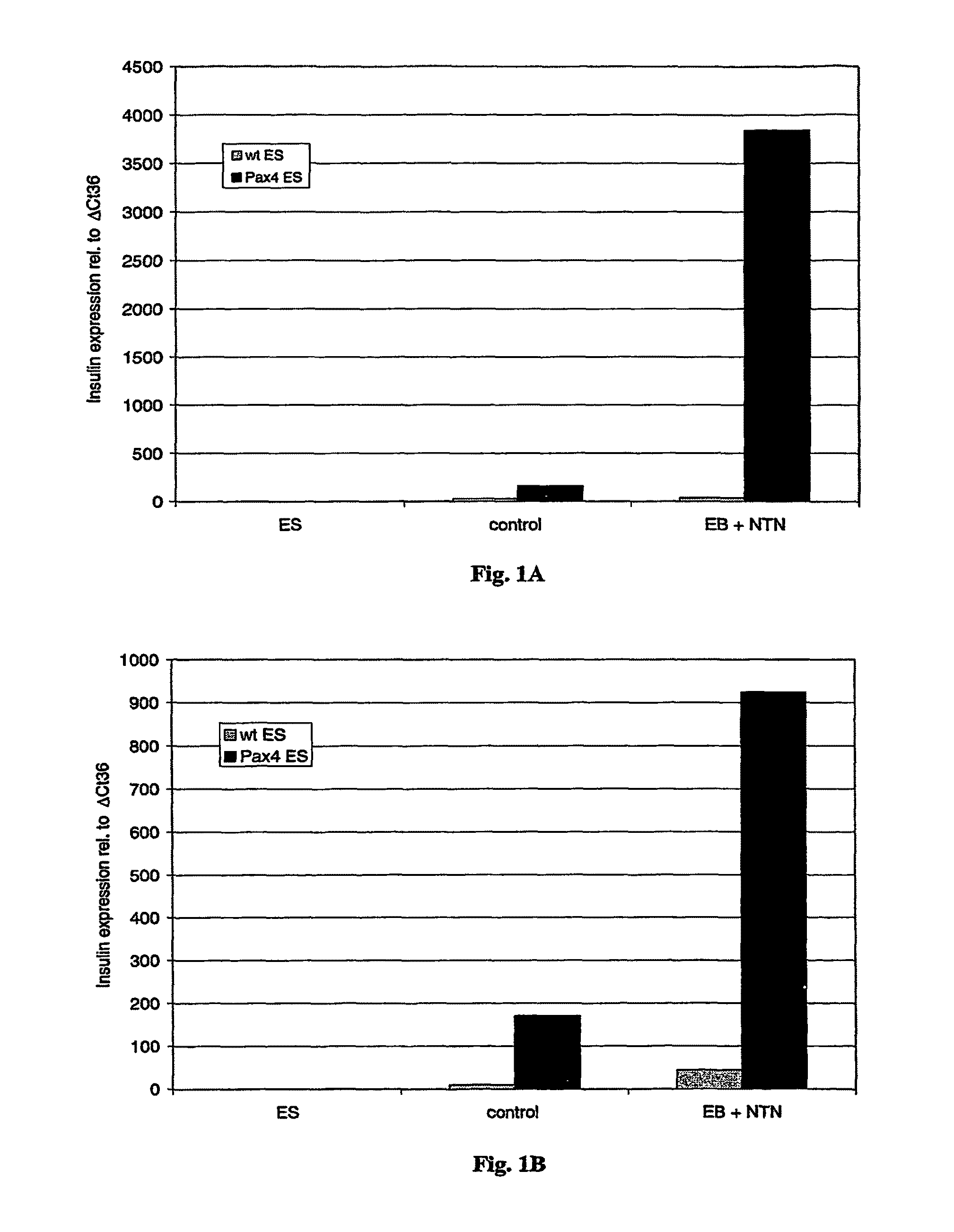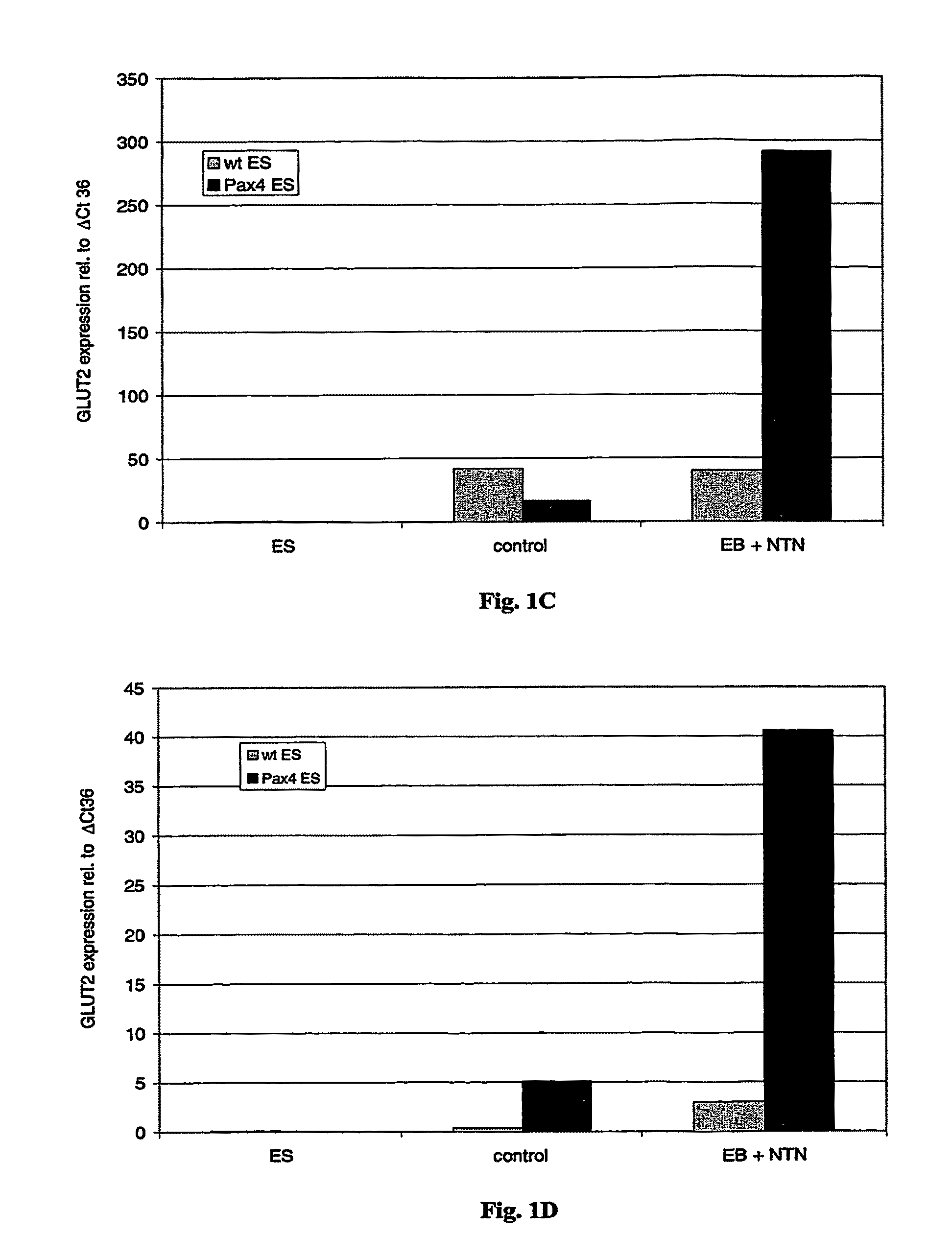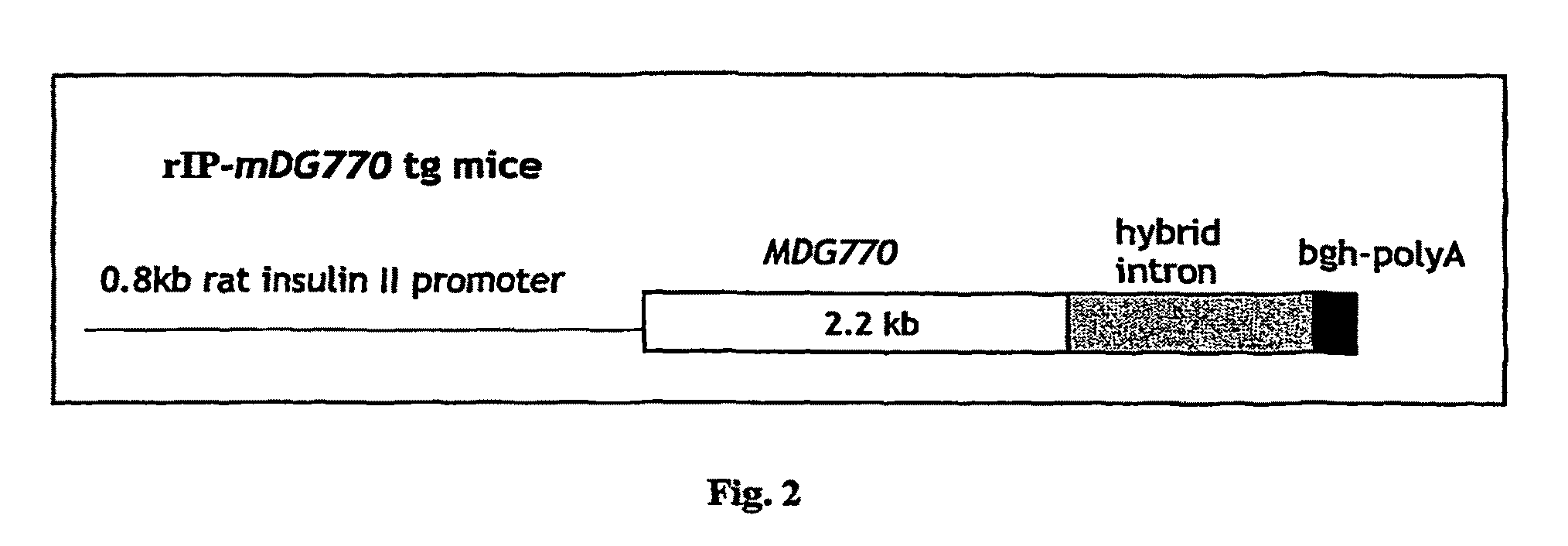Method for treating diabetes using neurturin
a diabetes and neurturin technology, applied in the field of diabetes treatment using neurturin, can solve the problems of increased blood glucose levels, impaired beta-cell function, and increased beta-cell apoptosis, and the pancreatic endocrine function would remain impaired,
- Summary
- Abstract
- Description
- Claims
- Application Information
AI Technical Summary
Benefits of technology
Problems solved by technology
Method used
Image
Examples
example 1
Generation of ES Cells Expressing the Pax4 Gene
[0095]Mouse R1 ES cells (Nagy et al. (1993) Proc. Natl. Aced, Sci. USA. 90: 8424-8428) were electroporated with the Pax4 gene under the control of the CMV promoter and the neomycin resistance gene under the control of the phosphoglycerate kinase 1 promoter (pGK-1).
[0096]ES cells were cultured in Dulbecco's modified Eagle's medium containing 4.5 g / l glucose, 10−4 M beta-mercaptoethanol, 2 nM glutamine, 1% non-essential amino acids, nM Na-pyruvate, 15% FCS and 500 U / ml leukaemia inhibitory factor (LIF). Briefly, approximately 107 ES cells resuspended in 0.8 ml phosphate buffered saline (PBS) were subjected to electroporation with 25 μg / ml of linearized expression vector (Joyner, Gene Targeting: A Practical Approach, Oxford University Press, New York, 1993). Five minutes after electroporation, ES cells were plated on petri dishes containing fibroblastic feeder cells previously inactivated by treatment with 100 μg / ml mitomycin C. One day af...
example 2
Differentiation of ES Cells into Insulin-Producing Cells (Referred to as ‘Control’ in FIG. 1)
[0097]The ES cell line R1 (wild type, ‘wt ES’ in FIG. 1) and ES cells constitutively expressing Pax4 (‘Pax4 ES’ in FIG. 1) were cultivated as embryoid bodies (EB) by the hanging drop method, as described in patent application PCT / EP02 / 04362, published as WO 02 / 086107 and by Blyszczuk et al., 2003, Proc Natl Aced Sci USA. 100: 998-1003, which are incorporated herein by reference, with media as described below and in Table 2. The embryoid bodies were allowed to form in hanging drop cultures for 2 days and then transferred for three days to suspension cultures in petri dishes. At day 5, EBs were plated separately onto gelatin-coated 6 cm cell culture dishes containing a differentiation medium prepared with a base of Iscove modified Dulbecco's medium. After dissociation and replating at day 14, cells were cultured up to 40 days in the differentiation medium prepared with a base of Dulbecco's mod...
example 3
Expression of Pancreas Specific Genes after Differentiation of ES Cells into Insulin-Producing Cells
[0098]Expression levels of pancreas specific genes was measured by semi-quantitative RT-PCR analysis. Differentiated wild type ES and Pax4 ES cells were collected after embryoid body formation and suspended in lysis buffer (4 M guanidinium thiocyanate, 25 mM sodium citrate, pH 7; 0.5% sarcosyl, 0.1 M beta-mercaptoethanol). Total RNA was isolated by the single step extraction method described by Chomczynski & Sacchi, 1987, Anal. Biochem. 162: 156-159). mRNA was reverse transcribed using PolyT tail primer Oligo d(T)16 (Perkin Elmer) (SEQ ID NO: 8) and the resulting cDNA was amplified using oligonucleotide primers complementary and identical to transcripts of beta-cell glucose transporter Glut2 and insulin. The house keeping gene beta-tubulin was used as internal standard. Reverse transcription (RT) was performed with MuLV reverse transcriptase (Perkin Elmer). Multiplex PCRs were carried...
PUM
 Login to View More
Login to View More Abstract
Description
Claims
Application Information
 Login to View More
Login to View More - R&D
- Intellectual Property
- Life Sciences
- Materials
- Tech Scout
- Unparalleled Data Quality
- Higher Quality Content
- 60% Fewer Hallucinations
Browse by: Latest US Patents, China's latest patents, Technical Efficacy Thesaurus, Application Domain, Technology Topic, Popular Technical Reports.
© 2025 PatSnap. All rights reserved.Legal|Privacy policy|Modern Slavery Act Transparency Statement|Sitemap|About US| Contact US: help@patsnap.com



